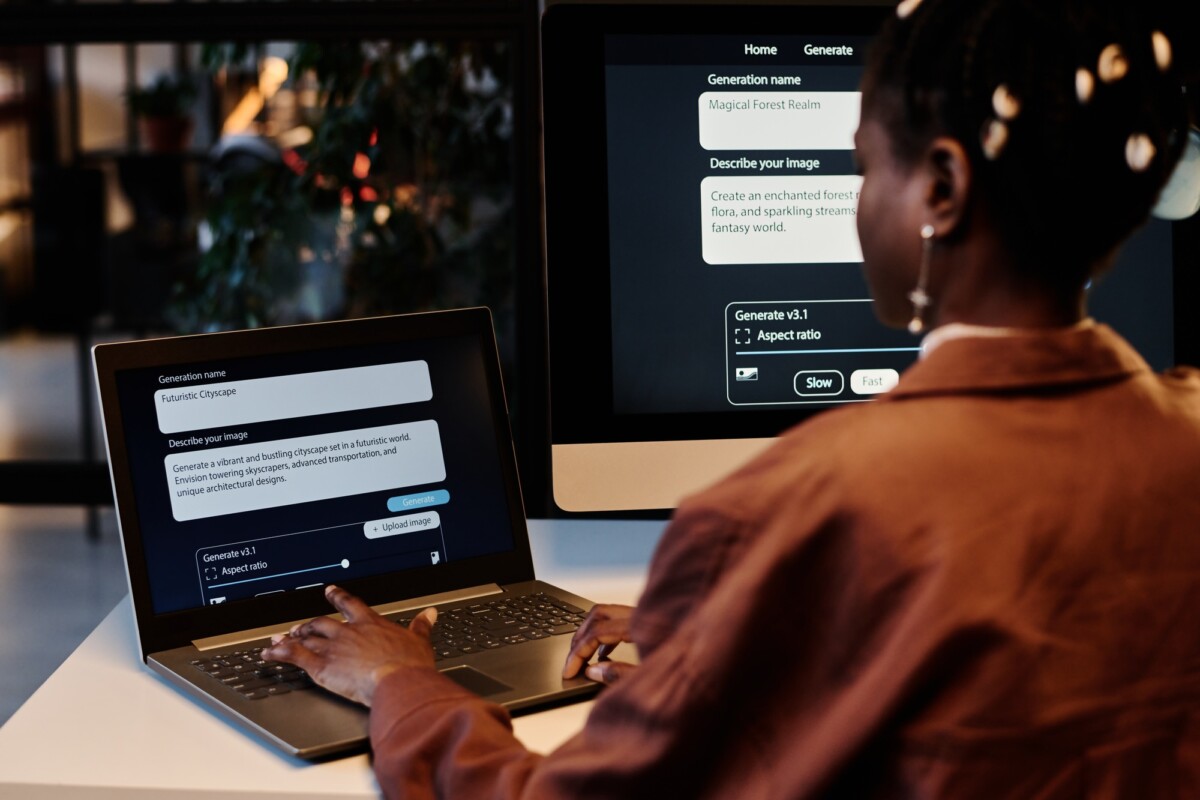Unlocking Communication: The Power of Speech Generating Devices
Speech generating devices (SGDs) are remarkable tools that empower individuals with speech impairments to communicate effectively. These devices play a crucial role in enhancing the quality of life for users by providing them with a voice, enabling them to express their thoughts, needs, and emotions. As technology advances, the significance of speech generating devices continues to grow, making communication more accessible for those who rely on them.
What Are Speech Generating Devices?
Speech generating devices are electronic devices that produce spoken language. They can be used by individuals who have difficulty speaking due to various conditions such as cerebral palsy, stroke, or autism. SGDs can range from simple communication boards to sophisticated software applications that generate speech from text input. They are designed to cater to the unique needs of each user, ensuring that everyone can find a suitable method of communication.
Types of Speech Generating Devices
- Dedicated Devices: These are standalone devices specifically designed for communication. They often come with pre-installed software and are tailored for users with significant speech challenges.
- Software Applications: Many SGDs are available as apps on tablets or smartphones, providing flexibility and portability. Users can customize these applications to suit their preferences.
- Eye-Tracking Devices: For individuals with limited mobility, eye-tracking technology allows them to control the device using their eye movements, making communication possible without physical interaction.
The Impact of Speech Generating Devices
According to the American Speech-Language-Hearing Association, approximately 1 in 12 people in the U.S. has a communication disorder. Speech generating devices have been shown to significantly improve the ability of these individuals to communicate, leading to better social interactions and increased independence. Studies indicate that users of SGDs report higher levels of satisfaction and engagement in their daily lives, highlighting the importance of these devices in fostering connections with others.
Benefits of Using Speech Generating Devices
- Enhanced Communication: SGDs provide users with a reliable means to express themselves, reducing frustration and improving social interactions.
- Increased Independence: With the ability to communicate effectively, users can make choices and express their needs without relying on others.
- Customizable Options: Many SGDs offer customizable vocabulary and settings, allowing users to tailor their communication experience to fit their unique needs and preferences.
Types of Speech Generating Devices
Speech generating devices (SGDs) are remarkable tools that empower individuals with speech impairments to communicate effectively. These devices play a crucial role in enhancing the quality of life for users by providing them with a voice, enabling them to express their thoughts, needs, and emotions. As technology advances, the variety of SGDs available has expanded, catering to different communication needs and preferences. Let’s explore the different types of speech generating devices that are making a significant impact in the world of assistive communication.
1. Dedicated Speech Generating Devices
- Definition: These are devices specifically designed for communication purposes. They often come pre-loaded with software tailored for speech generation.
- Examples: Popular models include the Dynavox and Tobii devices, which offer a range of features from touch screens to eye-tracking technology. Dedicated SGDs are often robust and user-friendly, making them ideal for individuals who require consistent and reliable communication tools. They typically include customizable vocabulary and can be programmed to suit the user’s specific needs, allowing for a personalized communication experience.
2. Mobile Apps and Software
- Definition: Many speech generating applications are available for smartphones and tablets, providing a more flexible and portable option for communication.
- Examples: Apps like Proloquo2Go and TouchChat are widely used and can be installed on various devices, making them accessible to a broader audience. Mobile apps offer the advantage of being cost-effective and easily updated. They allow users to carry their communication tools wherever they go, ensuring they can communicate in any setting. According to a study, nearly 80% of users prefer mobile apps due to their convenience and ease of use.
3. Text-to-Speech Devices
- Definition: These devices convert written text into spoken words, allowing users to type out their messages before having them spoken aloud.
- Examples: Devices like the Speak for Yourself and the GoTalk series fall into this category, providing users with a straightforward way to communicate. Text-to-speech devices are particularly beneficial for individuals who can type but may struggle with verbal communication. They can significantly reduce frustration and enhance interaction with others, making social situations more enjoyable. Statistics show that users of text-to-speech devices report a 70% increase in social engagement after using these tools.
Benefits of Using Speech Generating Devices
Speech generating devices (SGDs) are remarkable tools that empower individuals with speech impairments to communicate effectively. These devices can range from simple communication boards to sophisticated software applications that convert text to speech. The significance of SGDs lies in their ability to enhance the quality of life for users, enabling them to express their thoughts, needs, and emotions more freely. Let’s explore the various benefits of using speech generating devices and how they can transform communication for many individuals.
Enhanced Communication
- Improved Interaction: SGDs allow users to engage in conversations with family, friends, and caregivers, fostering deeper connections.
- Expressive Freedom: Users can convey their thoughts and feelings more accurately, reducing frustration and improving social interactions.
Speech generating devices significantly enhance communication by providing users with a voice. This is especially crucial for individuals who may have lost their ability to speak due to conditions like ALS, stroke, or cerebral palsy. According to a study by the American Speech-Language-Hearing Association, individuals using SGDs reported a 70% increase in their ability to communicate effectively with others, highlighting the transformative power of these devices.
Increased Independence
- Self-Advocacy: Users can express their needs and preferences without relying on others, promoting autonomy.
- Daily Activities: SGDs can assist in managing daily tasks, such as ordering food or making appointments, which enhances independence.
One of the most significant benefits of speech generating devices is the increased independence they offer. Users can communicate their needs without assistance, allowing them to navigate daily life more confidently. A survey conducted by the National Center for Assistive Technology found that 85% of SGD users felt more independent after using these devices, demonstrating their impact on personal autonomy.
Educational Opportunities
- Learning Support: SGDs can facilitate learning by allowing students to participate in classroom discussions.
- Skill Development: Users can develop language and communication skills through interactive features of SGDs.
Speech generating devices also play a crucial role in education. They provide students with the tools to engage in learning activities, participate in discussions, and collaborate with peers. Research indicates that students using SGDs show a 60% improvement in academic performance, as they can better express their understanding of the material. This not only enhances their learning experience but also boosts their confidence in academic settings.
Statistics on Speech Generating Devices Usage
Speech generating devices (SGDs) are essential tools that empower individuals with speech impairments to communicate effectively. These devices can range from simple communication boards to sophisticated electronic systems that generate speech. The significance of SGDs lies in their ability to enhance the quality of life for users, enabling them to express their thoughts, needs, and emotions, thus fostering independence and social interaction.
Prevalence of Use
- According to recent studies, approximately 1 in 1,000 individuals in the United States relies on speech generating devices for communication.
- The prevalence is notably higher among individuals with conditions such as cerebral palsy, autism spectrum disorders, and traumatic brain injuries. The usage of speech generating devices is becoming increasingly common, particularly in educational settings. Many schools are now incorporating SGDs into their special education programs to support students with communication challenges. This trend highlights the growing recognition of the importance of inclusive education and the role of technology in facilitating communication.
Demographics of Users
- Research indicates that around 80% of SGD users are children, with many starting to use these devices as early as age 3.
- Adults with degenerative diseases, such as ALS or Parkinson’s, also represent a significant portion of SGD users, often turning to these devices as their speech abilities decline. The demographic data shows that while children make up a large segment of SGD users, adults are increasingly benefiting from these technologies as well. This shift underscores the versatility of speech generating devices in catering to various age groups and conditions, making them a vital resource across the lifespan.
Impact on Communication
- Studies have shown that individuals using speech generating devices experience a 50% increase in communication opportunities compared to those who do not use such devices.
- Users report higher levels of social interaction and improved relationships with family and peers after starting to use SGDs. The impact of speech generating devices on communication is profound. Users not only gain the ability to express themselves but also experience enhanced social connections, which can lead to improved mental health and overall well-being. This highlights the critical role that SGDs play in bridging communication gaps for individuals with speech impairments.
Challenges in Speech Generating Device Implementation
Speech generating devices (SGDs) are transformative tools that empower individuals with speech impairments to communicate effectively. These devices can range from simple picture boards to sophisticated electronic systems that produce speech. Their significance lies in enhancing the quality of life for users, enabling them to express thoughts, needs, and emotions, thereby fostering independence and social interaction.
Implementing speech generating devices can be a complex process, often fraught with challenges that can hinder their effectiveness. Understanding these challenges is crucial for caregivers, educators, and healthcare professionals.
User Acceptance
- Many users may feel self-conscious or frustrated when using SGDs, especially if they are accustomed to traditional forms of communication.
- Building confidence in using these devices is essential for effective communication.
- Training and support can help users become more comfortable and proficient with their devices.
Technical Limitations
- Not all SGDs are created equal; some may lack the necessary features to meet individual needs.
- Compatibility issues with other assistive technologies can arise, complicating the user experience.
- Regular updates and maintenance are required to ensure optimal performance, which can be a barrier for some users.
Cost and Accessibility
- The financial burden of acquiring and maintaining SGDs can be significant, often limiting access for those in need.
- Insurance coverage for these devices varies widely, leading to disparities in availability.
- Community resources and funding programs can help, but they are not always sufficient to meet demand.
In conclusion, while speech generating devices offer incredible potential for enhancing communication, addressing these challenges is essential for successful implementation. By focusing on user acceptance, technical limitations, and cost accessibility, we can work towards a future where everyone has the opportunity to communicate effectively.
Future Trends in Speech Generating Devices
Speech generating devices (SGDs) have become a lifeline for individuals with speech impairments, enabling them to communicate effectively and participate in daily activities. As technology advances, the future of these devices looks promising, with innovations that aim to enhance user experience and accessibility. Understanding the upcoming trends in SGDs can help users, caregivers, and professionals stay informed about the tools that can significantly improve communication.
Integration of AI and Machine Learning
- Personalized Communication: AI algorithms can analyze user behavior and preferences, allowing SGDs to adapt to individual communication styles.
- Predictive Text Features: Machine learning can enhance predictive text capabilities, making it easier for users to construct sentences quickly.
- Voice Recognition Improvements: Enhanced voice recognition technology will allow users to control their devices more intuitively, making communication smoother and more natural.
As artificial intelligence continues to evolve, we can expect SGDs to become more intuitive, learning from user interactions to provide a more personalized communication experience. This could lead to a significant reduction in the time it takes to communicate, which is crucial for users who rely on these devices.
Increased Portability and Wearable Technology
- Compact Designs: Future SGDs are likely to be smaller and more portable, making them easier to carry around.
- Wearable Devices: Innovations may lead to the development of wearable SGDs, such as smart glasses or wristbands, that allow for discreet communication.
- Integration with Smartphones: Many SGDs will likely integrate seamlessly with smartphones, providing users with a familiar interface and additional functionalities.
The trend towards portability means that users will have more options for communication on the go, which is essential for maintaining social connections and independence.
Enhanced Customization and User Control
- User-Friendly Interfaces: Future SGDs will focus on creating more intuitive interfaces that cater to users with varying levels of tech-savviness.
- Customizable Vocabulary: Users will have the ability to easily customize their vocabulary and phrases, making communication more relevant to their daily lives.
- Community Sharing Features: Users may be able to share their customizations with others, fostering a sense of community and support.
Customization is key in ensuring that speech generating devices meet the unique needs of each user, allowing for a more effective communication experience. As these trends develop, we can expect SGDs to become even more integral to the lives of those who rely on them.
Frequently Asked Questions (FAQs)
What is an example of a speech-generating device?
A speech-generating device (SGD) is an assistive communication tool that helps individuals with speech impairments communicate effectively. Examples of SGDs include:
- Tobii Dynavox I-Series – Eye-tracking communication device for individuals with ALS and other conditions.
- PRC Accent 1000 – A portable AAC device with customizable communication options.
- iPad with AAC Apps – Devices running software like Proloquo2Go or TouchChat.
These devices convert text or symbols into spoken words, allowing non-verbal individuals to communicate.
Does Medicare cover speech-generating devices?
Yes, Medicare Part B covers speech-generating devices when they are deemed medically necessary. The device must be prescribed by a licensed healthcare professional, and the patient must meet Medicare’s eligibility criteria. Typically, SGDs are classified as Durable Medical Equipment (DME) under Medicare guidelines. However, coverage depends on factors like medical necessity, supplier qualifications, and prior authorization.
Who qualifies for an AAC device?
Individuals who have severe speech or language impairments that limit their ability to communicate may qualify for an AAC (Augmentative and Alternative Communication) device. Common conditions that may require an AAC device include:
- ALS (Amyotrophic Lateral Sclerosis)
- Cerebral Palsy
- Stroke-related speech impairments
- Autism spectrum disorder (ASD)
- Traumatic brain injury (TBI)
A licensed speech-language pathologist (SLP) usually evaluates the individual’s needs and recommends an appropriate AAC device.
Is an AAC device covered by insurance?
Yes, many health insurance plans, including Medicare, Medicaid, and private insurers, cover AAC devices when they are considered medically necessary. Coverage varies by plan, but key factors include:
- A medical diagnosis supporting the need for an AAC device.
- A prescription or recommendation from a speech-language pathologist.
- Prior authorization requirements by the insurance provider.
Patients should check with their insurance company for specific coverage details and reimbursement policies.
Why wait? Compare Medicare plans for free at NewMedicare.com or call 📞 (833) 203-6742 today!





